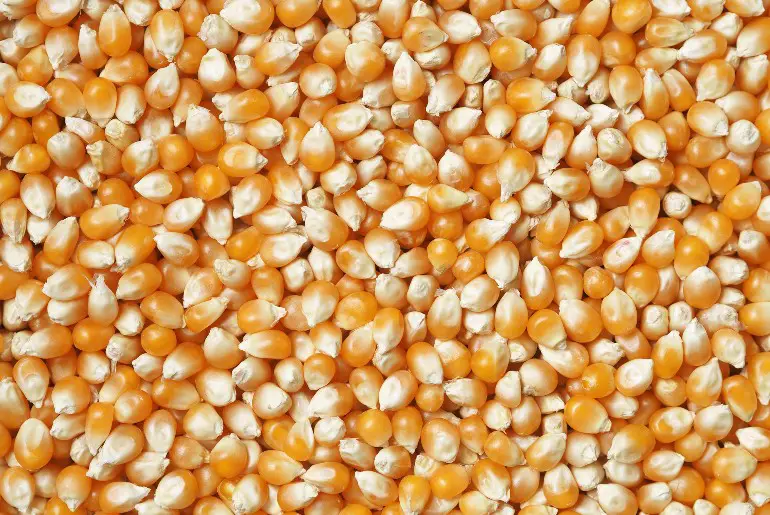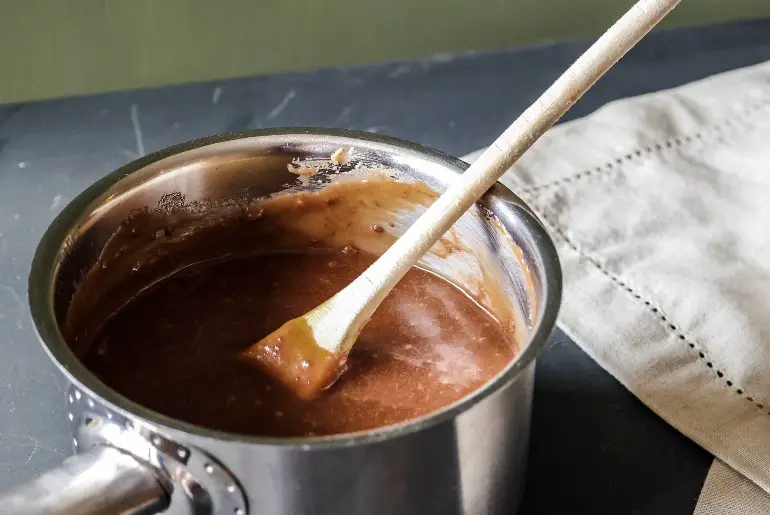What Is Cornstarch?
Cornstarch is a fine, white powder made from corn kernels’ starchy interior (called the endosperm). It is commonly used for thickening foods such as sauces, fillings, puddings, etc. It is also used for dredging (coating) foods to get a crispy outside when fried.
How Is Cornstarch Made?
Corn contains three main parts: the seed coat, the endosperm, and the germ. The endosperm is high in starch (a form of carbohydrates) as it is the primary energy reserve for the corn kernel.
The corn is steeped and cleaned, and impurities removed. Then it is soaked in warm water to help the starch release. The soft kernel is then coarsely milled, and the germ is removed (and can then be processed into corn oil).
The remaining kernel is finely milled, so the fibrous hull is completely removed. The starch slurry is then separated, dried, and processed into cornstarch. Because it is made from corn, cornstarch is generally gluten-free unless made in a facility that also processes gluten-containing products.
What Is The Difference Between Cornstarch and Corn Flour?
Cornstarch comes only from the starchy part of the corn kernel (the endosperm) and is a fine white powder. Corn flour is also quite fine but is made by grinding the entire corn kernel into flour. Corn flour has fiber and fat, while cornstarch has little fiber and essentially no fat.
What Is The Difference Between Cornstarch and Cornmeal?
Like I said above, cornstarch comes only from the starchy part of the corn kernel (the endosperm) and is very fine. Similar to corn flour, cornmeal is made by grinding the entire corn kernel. However, unlike corn flour, corn meal is very coarsely ground.

Does Cornstarch Go Bad?
Cornstarch should last essentially forever as long as it is stored properly. If moisture or insects get into the container, it can go bad. Otherwise, you can use cornstarch long past its best-by date. Cornstarch also does not lose effectiveness with time.
Cornstarch has almost no water content. Mold or bacteria is usually what causes food to go bad, and they need water to grow. So it is essential to keep moisture from getting into your cornstarch. Keep in a sealed, airtight container in a cool, dry place like a pantry or cupboard.
If your cornstarch contains bugs, has mold, is discolored, or smells bad – throw it out! If it looks and smells fine but has a sour taste, that would also be a reason to throw it out.
Cornstarch Substitutes
The best go-to alternative for cornstarch is potato starch. Potato starch is a light white powder made from crushed potatoes. It works well for thickening liquids and dredging (coating) items before frying and even works well in sweet applications. You can use potato starch as a one-to-one alternative for cornstarch.
What about flour? While flour is most likely what you have in your pantry, it isn’t an ideal cornstarch substitute. A sauce thickened with cornstarch is more translucent, but if you thicken it with flour, it will be more opaque, and the texture won’t be as silky. Flour is a decent substitute for a crust when frying foods, but it won’t be as crispy. If using flour, use 2 tablespoons flour for each 1 tablespoon used in the original recipe. Flour also needs to be cooked before using it for thickening; otherwise, it will have a distinct taste. Usually, this is done by making a roux (mixture of fat, flour, and a liquid).
While rice flour, arrowroot powder, tapioca flour, and xanthan gum can be used as alternatives to cornstarch, they are more challenging to use than potato starch. You can quickly end up with a gummy, overly thickened product or a gritty or overly thin product. Unfortunately, unless you are very careful, these thickeners can easily make your food straight-up gross, so proceed with caution unless you are familiar with using these ingredients.

Why Isn’t My Cornstarch Thickening?
Cornstarch is made up of starch granules. These starch granules absorb water, swell up and turn into a gel-like substance, thickening your sauce, pudding, etc. For this to happen, you have to heat cornstarch to approximately 203°F.
So if your cornstarch doesn’t seem to be working, your mixture may not be hot enough or maybe hasn’t been cooked long enough. If you are thickening something that is already hot, you want to make sure to dissolve your cornstarch in cold water first then stir it in. Doing this will make sure that the cornstarch is mixed in well. If you add it directly to a hot liquid, it will become lumpy and may not thicken properly.
On the other side, if you heat your cornstarch mixture for too long, that can cause it to thin out. Cornstarch will lose its thickening ability if you stir too vigorously and cook for too long. Once your mixture comes to a boil, it should take 2-3 minutes to thicken.
You will also want to make sure you have added enough cornstarch. If you have cooked your mixture for a couple of minutes and it still isn’t thickening, you may not have enough cornstarch. If I am making a new recipe that isn’t thick enough, I will mix 1 tablespoon with 1/4 cup of cold water and add that to my mixture to see if that helps. However, it is also important to remember that the mixture will thicken as it cools. So if you are using a trusted recipe, especially if you’re making something that will be served cold, like pudding, you may need to trust that it will thicken up a bit as it cools.
Lastly, acidity can break down the cornstarch and keep it from thickening. So watch out if you are making a recipe with an acidic ingredient, such as lemon juice, vinegar, etc. If using an acidic ingredient, you will want to add it in at the end after your cornstarch has thickened up.
Want to check out some cornstarch thickened recipes? Check out my peach pie ice cream or fresh peach pie. Let me know in the comments if you have any questions!






